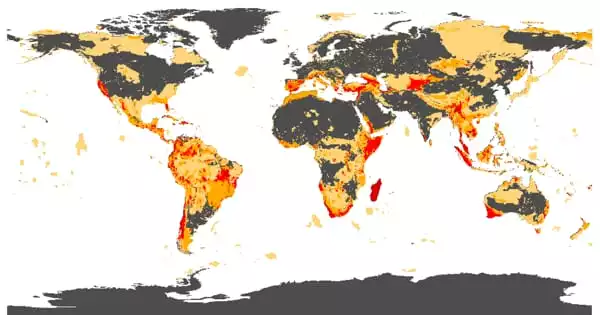Even those who have been spared from flash floods are becoming accustomed to hearing about it, but the idea of a “flash drought” is less well-known. Nonetheless, climatologists warn that this is a genuine occurrence that will worsen as global temperatures increase. Flash droughts don’t happen as quickly as flash floods; instead of a torrent of water coming after hours of heavy rain, the soil dries up over days or weeks. Nonetheless, researchers write in Nature Communications that they all have one thing in common: they catch individuals off guard, with all the repercussions that entails.
The study examines flash droughts from 2000 to 2020 to investigate if global warming has exacerbated the issue. Overall, they discovered that the number of droughts that occur within a month has remained consistent throughout time. There is no equivalent of a “one in 100 years” flood a month following a “one in 500 year” flood in portions of Australia. However, the fastest category of flash droughts, those that last less than five days, has risen by 3 to 19 percent.

That’s crucial because, like floods, the fastest-onset droughts are the most difficult to plan for, and five-day onset droughts account for around 40% of all droughts. During this time, several places in the world that are already prone to flash droughts have witnessed increases of over 20%. South and Southeast Asia, which together account for about a third of the world’s population, as well as central North America, are among these regions. Although the authors cannot prove that the increase is due to human-caused global warming, they do not believe it is a coincidence.
Professor Zong-Liang Yang of the University of Texas at Austin stated in a statement that “every year, we are seeing record-breaking heat occurrences, and that is a good prelude to these flash droughts.” “The goal and purpose [of this study] are to reduce the negative consequences.” Despite the fact that our forefathers have been surviving – or not surviving – flash droughts since before they were humans, the phenomena were not fully understood until remote sensing technologies allowed us to detect soil moisture over a large region. It was just 20 years ago when the word was coined. High temperatures, a lack of rain, and low air humidity can cause soil to dry up very rapidly.
When food supplies run out in the second or third year of low rainfall, droughts can kill millions. Flash droughts, on the other hand, may appear to be a small issue, with normalcy usually restored within weeks or months. The authors of the article, however, emphasize the importance of timing. A flash drought in the central United States in 2012 caused $35.7 billion in damage to the maize harvest by striking exactly when it was needed the most.
Markets throughout the world have little time to prepare for shortages and price spikes. The locations most vulnerable to flash droughts are those with the greatest seasonal variations in humidity. Professor Shuo Wang of the Hong Kong Polytechnic University, a co-author, stated, “We should pay particular attention to the susceptible locations with a high chance of concurrent soil dryness and atmospheric aridity.”
















